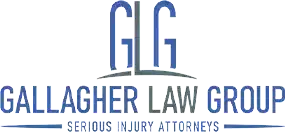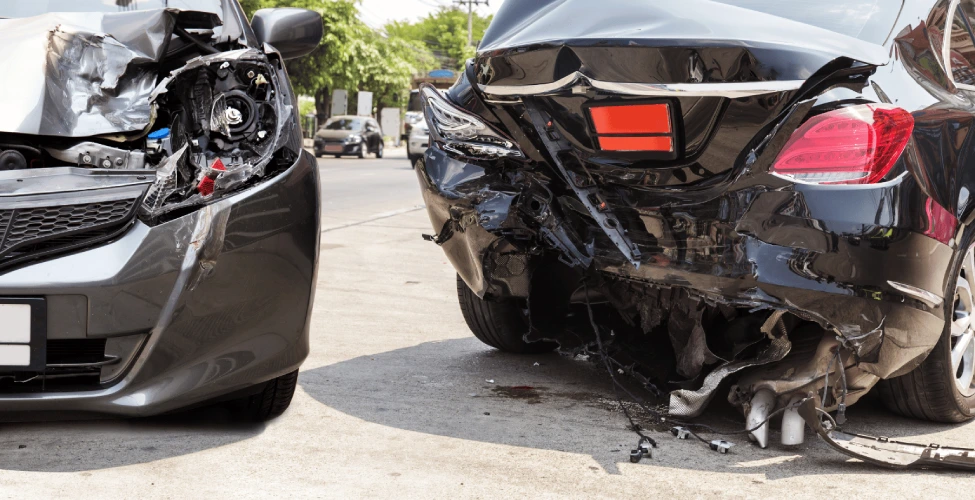After a car accident in Arizona, one of the most crucial questions to answer is: Who was at fault? Liability determination directly affects insurance claims, compensation, and potential legal proceedings. While some cases present straightforward liability scenarios, many Arizona accidents involve complex situations with shared responsibility among multiple parties. Understanding how liability is determined in the Grand Canyon State can help you navigate the claims process more effectively and protect your legal rights.
Arizona’s Comparative Negligence System
Arizona operates under a “pure comparative negligence” system as established by A.R.S. § 12-2505. This legal framework significantly impacts how liability is determined and compensation is awarded:
- Each party can be assigned a percentage of fault ranging from 0% to 100%
- Injured parties can recover damages even if partially at fault
- Compensation is reduced by the plaintiff’s percentage of fault
- Recovery is possible even with significant fault (even 99% responsible parties can recover 1% of their damages)
This differs from “modified comparative negligence” states, where recovery is barred if a plaintiff’s fault exceeds a certain threshold (typically 50%), and from “contributory negligence” states, where any fault by the plaintiff bars recovery completely.
According to the Arizona Department of Transportation, this system allows for more nuanced liability determinations that reflect the reality that many accidents involve some degree of shared responsibility.
Evidence Used to Determine Liability in Arizona
The Phoenix Car Accident Attorneys at GLG explain that liability determinations rely on multiple forms of evidence:
Police Reports
- Official accident reports document officer observations
- Preliminary fault determinations may be included
- Citations issued can strongly indicate liability
- Statements from involved parties and witnesses
- Diagrams of the accident scene
Traffic Laws and Violations
Arizona’s traffic laws provide a framework for determining when a driver has acted negligently:
- Speeding violations (A.R.S. § 28-701)
- Failure to yield right-of-way (A.R.S. § 28-771 through 28-776)
- Following too closely (A.R.S. § 28-730)
- Improper lane usage (A.R.S. § 28-729)
- Distracted driving prohibitions (A.R.S. § 28-914)
- Driving under the influence (A.R.S. § 28-1381)
Violation of these laws often creates a presumption of negligence, though this can be rebutted with additional evidence.
Physical Evidence
- Damage patterns on vehicles
- Skid marks and road conditions
- Position of vehicles after impact
- Debris distribution
- Traffic control devices and their functionality
- Weather and visibility conditions
Witness Testimony
- Statements from uninvolved witnesses
- Passenger accounts
- Expert witness analysis
- First responder observations
Electronic Data
- Vehicle “black box” data (event data recorders)
- Dashcam footage
- Traffic or surveillance cameras
- Cell phone records (for distracted driving cases)
- GPS data
Recent Arizona Liability Determination Examples
Recent cases highlight how liability is established in various scenarios:
April 2025 – Complex Intersection Liability Case
The Arizona Republic reported on a case where liability was disputed following a collision at the intersection of Camelback Road and 7th Street in Phoenix. Initially, both drivers claimed they had the green light. Investigation of traffic signal timing records, combined with security footage from a nearby business obtained by the plaintiff’s attorney, established that the defendant had entered the intersection during a red light. This evidence resulted in a liability determination of 100% against the defendant, despite their initial denial.
March 2025 – Highway Construction Zone Shared Liability
According to AZ Family, a multi-vehicle accident on I-10 near the ongoing construction at the Broadway curve illustrates how liability can be distributed among multiple parties. The investigation determined that a driver changing lanes without signaling was 60% at fault, while the construction company was assigned 30% responsibility for inadequate lane markings and signage. The injured driver was found 10% at fault for following too closely. The case settled with proportional contributions from each responsible party’s insurance.
February 2025 – Weather-Related Shared Liability
ABC15 Arizona covered a chain-reaction crash during a monsoon storm on Loop 101 in Scottsdale. The court apportioned liability among several drivers: 45% to a driver who failed to reduce speed during limited visibility, 30% to another who made an unsafe lane change, and 25% to a third who was following too closely for conditions. This case demonstrated how Arizona’s pure comparative negligence system handles multi-vehicle accidents with shared responsibility.
Common Accident Scenarios and Presumptive Liability
Certain accident types come with general liability presumptions in Arizona, though these can be overcome with contrary evidence:
Rear-End Collisions
The GLG Arizona Accident Guide notes that rear-end collisions typically create a rebuttable presumption that the rear driver is at fault for:
- Following too closely
- Failing to maintain proper lookout
- Not allowing adequate stopping distance
Exceptions arise when:
- The front vehicle reversed suddenly
- The front vehicle stopped abruptly without cause
- The front vehicle’s brake lights were non-functional
- The rear vehicle was hit from behind and pushed forward
Left-Turn Accidents
Drivers making left turns are generally presumed liable as they must yield to oncoming traffic, unless:
- The oncoming vehicle was speeding excessively
- The oncoming driver ran a red light
- The oncoming driver was impaired
- Traffic control devices specifically protected the left turn
Lane Change Collisions
The driver changing lanes typically bears liability for:
- Failure to signal
- Unsafe movement between lanes
- Improper monitoring of blind spots
The Role of Traffic Citations in Liability Determination
When an officer issues a citation following an accident, it significantly impacts liability determination:
- Citations create a rebuttable presumption of fault
- If a cited driver pleads guilty or pays the fine, this can be used as an admission of fault
- If the citation is contested and dismissed, the presumption may be weakened
According to statistics from the Arizona Judicial Branch, approximately 75% of drivers who receive citations in accident cases either plead guilty or pay the fine without contesting the ticket, effectively admitting fault for insurance purposes.
Special Liability Considerations in Arizona
Liability for Impaired Driving
Arizona has some of the strictest DUI laws in the nation. When impairment is involved:
- The impaired driver typically bears substantial liability
- Evidence of impairment creates strong presumptions of fault
- Criminal convictions for DUI can establish negligence per se
- In some cases, punitive damages may be available
Distracted Driving Liability
With Arizona’s 2019 hands-free law (A.R.S. § 28-914):
- Evidence of phone use while driving strengthens liability claims
- Phone records can be subpoenaed to establish distraction
- Texting drivers who cause accidents face heightened liability exposure
Dram Shop and Social Host Liability
Arizona law (A.R.S. § 4-311) allows for potential third-party liability:
- Bars and restaurants can be liable for serving already-intoxicated patrons
- Social hosts may be liable for serving alcohol to minors
- This extends the liability determination beyond just the drivers
Government Vehicle Liability
Accidents involving government vehicles follow special rules in Arizona:
- Notice of claim requirements (180-day deadline)
- Different statute of limitations (1 year instead of 2)
- Potential immunities for certain government functions
- Caps on damages in some circumstances
The GLG Phoenix Personal Injury Center emphasizes the importance of understanding these special requirements when government vehicles are involved in accidents.
Investigation Process and Timeline
A thorough liability investigation in Arizona typically follows this timeline:
Immediate Investigation (1-7 days)
- Police report creation
- Scene documentation
- Witness statements
- Vehicle damage assessment
Intermediate Investigation (1-4 weeks)
- Detailed evidence analysis
- Medical record review
- Expert consultation
- Accident reconstruction
Advanced Investigation (1-3 months)
- Deposition testimony
- Discovery of additional evidence
- Expert reports
- Final liability determinations
Liability Disputes and Resolution Mechanisms
When liability is contested in Arizona accidents, several resolution methods exist:
Insurance Arbitration
Many insurance companies participate in inter-company arbitration for disputed claims:
- Panel of neutral arbitrators reviews evidence
- Binding decision on participating insurers
- Typically faster than litigation
- Limited to specific types of disputes
Mediation
- Neutral mediator facilitates negotiation
- Non-binding unless agreement reached
- Often court-ordered before trial
- Allows creative liability compromises
Litigation
- Court determines liability percentages
- Discovery process uncovers additional evidence
- Expert testimony evaluated by judge or jury
- Trial results are binding (subject to appeal)
According to Arizona Superior Court statistics, approximately 95% of auto accident cases settle before trial, often after liability has been firmly established through the discovery process.
Statute of Limitations for Establishing Liability
In Arizona, the timeframe for filing a lawsuit to establish liability is typically:
- Two years for personal injury claims
- Three years for property damage only
- One year for claims against government entities
These deadlines make prompt investigation and liability determination crucial.
The Impact of Arizona’s Minimum Insurance Requirements
Arizona’s relatively low minimum insurance requirements can complicate liability matters:
- $25,000 bodily injury liability per person
- $50,000 bodily injury liability per accident
- $15,000 property damage liability
When accidents involve severe injuries or multiple vehicles, these limits are often insufficient, leading to:
- Disputes over liability percentages to access additional coverage
- Uninsured/underinsured motorist claims
- Personal assets potentially at risk for at-fault parties
Unique Arizona Liability Considerations
Non-Driver Liability
Beyond drivers, other parties who may share liability include:
- Vehicle owners who negligently entrust to incompetent drivers
- Employers of drivers operating within the scope of employment
- Parents of minor drivers in some circumstances
- Vehicle manufacturers for defective components
- Government entities for road design or maintenance issues
Phantom Vehicle Cases
When accidents involve vehicles that leave the scene:
- Physical evidence becomes critical
- Witness testimony carries greater weight
- Uninsured motorist coverage may apply
- Burden of proof increases for the claimant
Documentation Tips for Supporting Liability Claims
To strengthen your position in liability determinations:
- Take photographs from multiple angles at the scene
- Get contact information from all witnesses
- Note any nearby businesses with potential security cameras
- Request a copy of the police report promptly
- Document road and weather conditions
- Preserve all communications with other parties
- Avoid social media posts about the accident
Conclusion
Liability determination in Arizona car accidents involves a careful analysis of evidence, application of traffic laws, and consideration of the state’s pure comparative negligence system. While certain accident types come with presumptions of fault, each case presents unique circumstances that require thorough investigation.
Understanding how liability is established can help accident victims protect their rights and ensure fair compensation under Arizona law. In cases with significant injuries or disputed liability, consulting with an attorney experienced in Arizona auto accident cases provides the best opportunity for a favorable outcome.
Remember that proper documentation, prompt reporting, and preservation of evidence all contribute to accurate liability determination, which forms the foundation of any successful accident claim in Arizona.
References
- Arizona Revised Statutes § 12-2505. Comparative Negligence System.
- Arizona Department of Transportation. (2024). Crash Reporting Requirements.
- Arizona Judicial Branch. (2025). Traffic Violation Statistics.
- Arizona Republic. (April 2025). Intersection collision liability established through traffic camera timing.
- AZ Family. (March 2025). I-10 construction zone accident highlights shared liability.
- ABC15 Arizona. (February 2025). Monsoon crash liability divided among multiple drivers.



